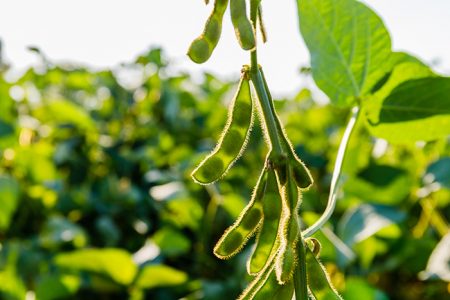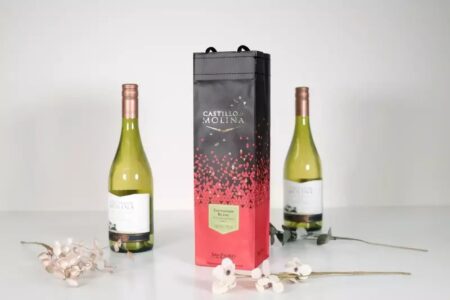Coca-Cola goes green
The Coca-Cola Company has released its third annual report on the environment detailing gains in water, packaging and energy efficiency. The 2004 study details progress in company and bottler operations that improved water use ratios, increased energy efficiency and improved recycling efforts.
“This report shows that we are serious about our commitment to the environment, says Jeff Seabright, vice president, environment & water resources.“We are changing the way we operate to use less water, less energy, and fewer raw materials, while improving our business efficiency. These changes make business sense and sense for the planet. We still have much to do, but our progress last year is documented in this report.
The 2004 Environmental Report focuses on three main areas of Coca-Cola’s operations and environmental impacts – water stewardship, packaging design, and energy efficiency and climate change.
According to the report, water use efficiency has improved globally by 6%. Last year, 2.72 litres of water were needed to produce one litre of beverage, as opposed to 2.9 litres required in 2003. In addition, rainwater harvesting programmes have been established at almost all the company’s plants in India.
“Water scarcity is a major public health concern, and one of the leading environment issues, says Seabright.“We are undertaking programmes to improve water supply and quality in all the areas where we operate around the world, and to call global attention to this problem.
Waste generation has fallen from 12.22 grams per unit of product in 2003 to 11.67 in 2004, a reduction of 4.5%. A new Ultra Glass Technology has been developed that is 14% more efficient in production, 20% lighter and 50% stronger.
Recent eco-design efforts have focused mainly on the company’s largest consumer packaging stream – PET plastic. The company is working with industry and regulators to establish clearer ‘design-for-recycling’ guidelines. Recycling of PET plastic continues to be made easier with the use of recycling friendly caps, labels, adhesives and colours.
In conjunction with its Brazilian partners, Coca-Cola has launched a programme to reduce greenhouse gas emissions by using alternative fuels. A fleet of 140 trucks in Sao Paulo is running on 5% biodiesel – made of castor beans and soybeans.
To fight global climate change, Coca-Cola and its partners have invested more than $30 (£24.9) million in developing HFC- (hydrofluorocarbons) free refrigerants, which are powerful greenhouse gases. So far, they have developed a CO2-based refrigerant that by 2010 will emit 700,000 fewer tons of greenhouses, about the equivalent of taking 150,000 cars off the road.
“This report shows that we are serious about our commitment to the environment, says Jeff Seabright, vice president, environment & water resources.“We are changing the way we operate to use less water, less energy, and fewer raw materials, while improving our business efficiency. These changes make business sense and sense for the planet. We still have much to do, but our progress last year is documented in this report.
The 2004 Environmental Report focuses on three main areas of Coca-Cola’s operations and environmental impacts – water stewardship, packaging design, and energy efficiency and climate change.
According to the report, water use efficiency has improved globally by 6%. Last year, 2.72 litres of water were needed to produce one litre of beverage, as opposed to 2.9 litres required in 2003. In addition, rainwater harvesting programmes have been established at almost all the company’s plants in India.
“Water scarcity is a major public health concern, and one of the leading environment issues, says Seabright.“We are undertaking programmes to improve water supply and quality in all the areas where we operate around the world, and to call global attention to this problem.
Waste generation has fallen from 12.22 grams per unit of product in 2003 to 11.67 in 2004, a reduction of 4.5%. A new Ultra Glass Technology has been developed that is 14% more efficient in production, 20% lighter and 50% stronger.
Recent eco-design efforts have focused mainly on the company’s largest consumer packaging stream – PET plastic. The company is working with industry and regulators to establish clearer ‘design-for-recycling’ guidelines. Recycling of PET plastic continues to be made easier with the use of recycling friendly caps, labels, adhesives and colours.
In conjunction with its Brazilian partners, Coca-Cola has launched a programme to reduce greenhouse gas emissions by using alternative fuels. A fleet of 140 trucks in Sao Paulo is running on 5% biodiesel – made of castor beans and soybeans.
To fight global climate change, Coca-Cola and its partners have invested more than $30 (£24.9) million in developing HFC- (hydrofluorocarbons) free refrigerants, which are powerful greenhouse gases. So far, they have developed a CO2-based refrigerant that by 2010 will emit 700,000 fewer tons of greenhouses, about the equivalent of taking 150,000 cars off the road.



